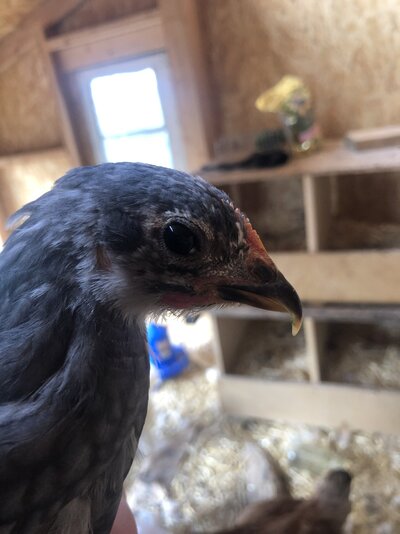Solanacae
Crowing
I have a 10 week chick that I’ve been treating with a hooked beak. I’ve been filing down the overgrown part every 3-4 days. I’ve included progress pictures of that helps at all, but I haven’t been successful in getting a good picture that shows the underside of the bill and how far the live part extends. When I was filing a couple days ago, I think I reached the sensitive part, because the resistance on the file changed and the chick flinched. I stopped filing immediately and then took the picture after checking to make sure I hadn’t drawn blood.
Do I keep filing every 3-4 days of do I need to slow down since I’m so close to nerves and live tissue? If I continue to file a little bit away as I have been doing, will it eventually recede, or will this gal always have to deal with a hooked bill?
Picture the day she hatched:

She may have had the beginnings of a hooked bill already?
This is week 3ish, top beak a little overgrown in hindsight.

She was hatched by a broody, so between the mama keeping her chicks close and having some hectic weeks because life happens, I didn’t notice how severe the hook was getting until about week 6-7.

This was her beak the day I started filing, but before filing.

Progress after about 1.5 weeks

About a week after that

Most recent picture from a couple days ago.

Do I keep filing every 3-4 days of do I need to slow down since I’m so close to nerves and live tissue? If I continue to file a little bit away as I have been doing, will it eventually recede, or will this gal always have to deal with a hooked bill?
Picture the day she hatched:
She may have had the beginnings of a hooked bill already?
This is week 3ish, top beak a little overgrown in hindsight.
She was hatched by a broody, so between the mama keeping her chicks close and having some hectic weeks because life happens, I didn’t notice how severe the hook was getting until about week 6-7.
This was her beak the day I started filing, but before filing.
Progress after about 1.5 weeks
About a week after that
Most recent picture from a couple days ago.



